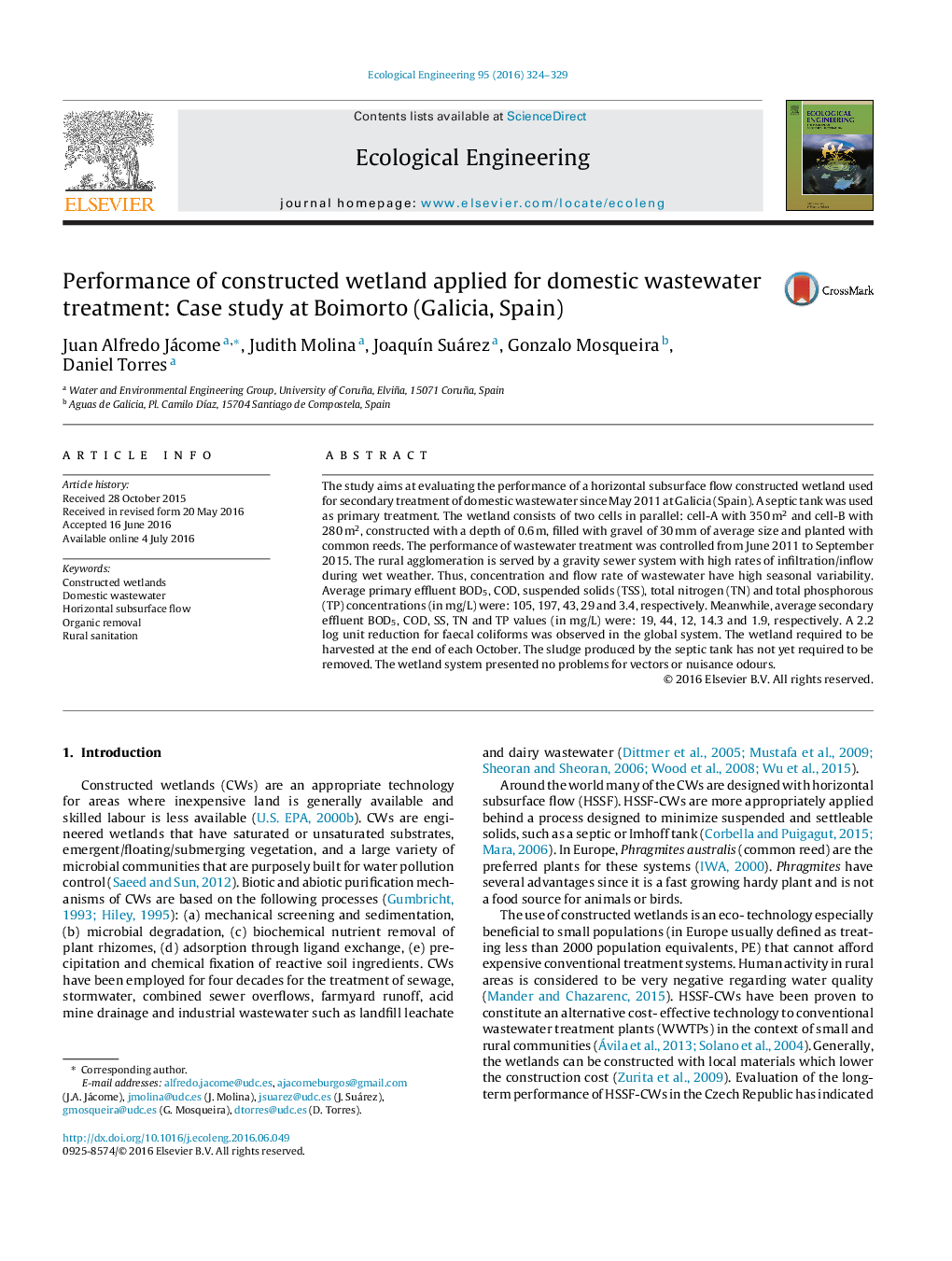| Article ID | Journal | Published Year | Pages | File Type |
|---|---|---|---|---|
| 4388457 | Ecological Engineering | 2016 | 6 Pages |
•The wetland has a high efficiency to remove slowly biodegradable and inert COD.•It is valid to calculate the wetland area required by model of plug-flow first order.•Starting the wetland is a key and sensitive operation.•The lack of irrigation during the first month of operation prevents the germination.•Monitoring discharge limits require analysing grab samples of secondary effluent.
The study aims at evaluating the performance of a horizontal subsurface flow constructed wetland used for secondary treatment of domestic wastewater since May 2011 at Galicia (Spain). A septic tank was used as primary treatment. The wetland consists of two cells in parallel: cell-A with 350 m2 and cell-B with 280 m2, constructed with a depth of 0.6 m, filled with gravel of 30 mm of average size and planted with common reeds. The performance of wastewater treatment was controlled from June 2011 to September 2015. The rural agglomeration is served by a gravity sewer system with high rates of infiltration/inflow during wet weather. Thus, concentration and flow rate of wastewater have high seasonal variability. Average primary effluent BOD5, COD, suspended solids (TSS), total nitrogen (TN) and total phosphorous (TP) concentrations (in mg/L) were: 105, 197, 43, 29 and 3.4, respectively. Meanwhile, average secondary effluent BOD5, COD, SS, TN and TP values (in mg/L) were: 19, 44, 12, 14.3 and 1.9, respectively. A 2.2 log unit reduction for faecal coliforms was observed in the global system. The wetland required to be harvested at the end of each October. The sludge produced by the septic tank has not yet required to be removed. The wetland system presented no problems for vectors or nuisance odours.
